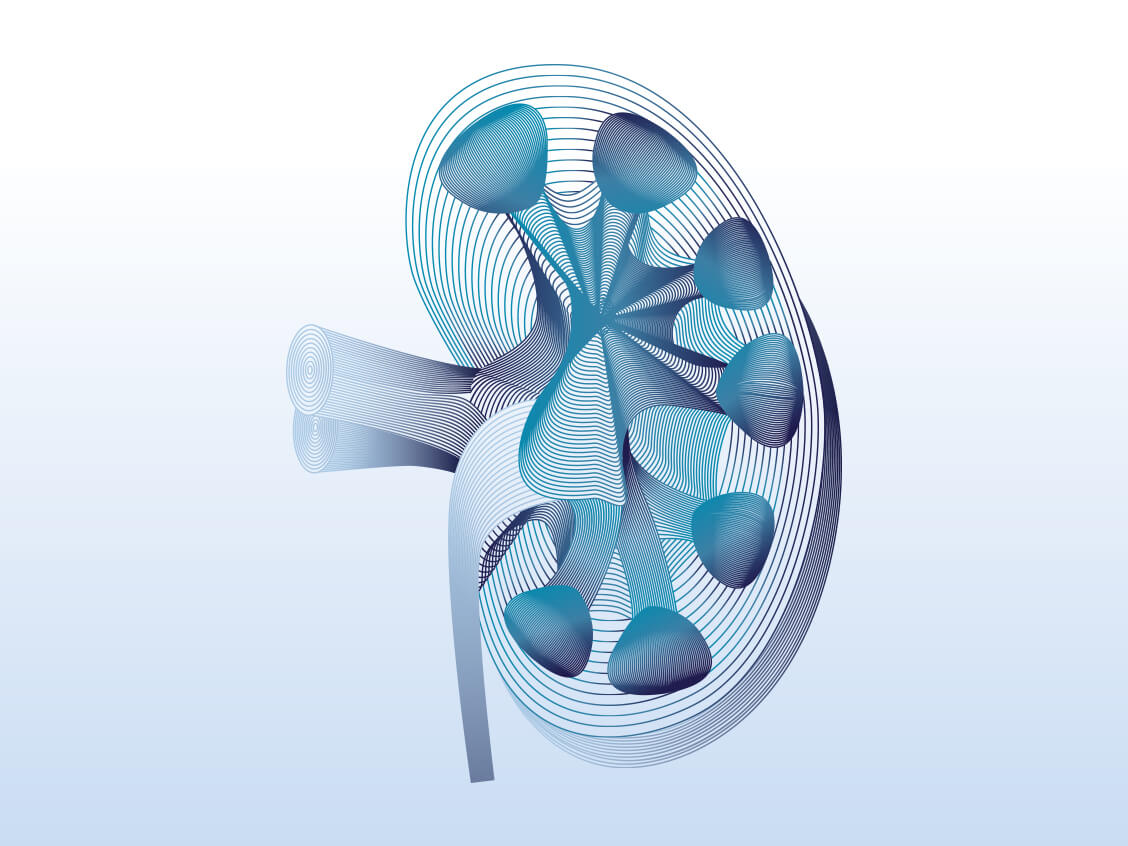- Lab Professionals
- Trends & Topics
Urinary total protein - More than just protein...

Add this fast, non-invasive prognostic marker to your diagnostic workflow. Test urinary total protein to diagnose and monitor kidney diseases, diabetes and high blood pressure.
Urinary total protein (UTP)
Urinary total protein (UTP) includes all proteins in urine samples. The presence of some quantities of proteins (<150 mg/day) is considered normal. However, the presence of elevated amounts of protein (>150 mg/day) in the excreted urine is called proteinuria.
The urinary total protein (UTP) kit detects the following types of proteins:
- Macro proteins,
- such as Albumin, Immunoglobulins (IgG), Transferrin
- Micro proteins,
- such as alpha-1-Microglobulin, beta-2-Microglobulin, Bence-Jones proteins*
(*Immunoglobulin light chain associated with multiple myeloma)
Besides detection of proteinuria, the UTP kit can also be used for the determination of total protein in other body fluids, such as cerebrospinal fluid (CSF).
Testing UTP is important
Testing UTP is important because, proteinuria is one of the earliest predictive marker of deteriorating kidney function. It is also important in the diagnosis of diseases associated with cardiac and thyroid function. The UTP test detects proteinuria non-invasively in order to guide the right therapy at the right time.
Disease conditions associated with proteinuria resulting from kidney damage as well as systemic diseases are listed in Table 1.
| Table 1 |
|---|
| Diabetes |
| Cardiac disease and hypertension |
| Glomerulonephritis |
| Systemic disorders (e.g. LN**, AAV***) |
| Infections |
| Myeloma |
| Pre-eclampsia |
| Exposure to drugs, toxins and metals |
| Stones in the urinary tract |
| Kidney transplant |
| Other kidney diseases |
Table 1 Disease conditions associated with proteinuria (*Lupus Nephritis, **ANCA associated vasculitis).
These diseases are often characterized depending on the type of proteinuria, of which there are 4 main types (Table 2).
| Type | Characteristics |
|---|---|
| Glomerular | increased glomerular permeability to protein |
| Tubular | decreased tubular reabsorption of proteins in glomerular filtrate |
| Pre-renal | increased plasma concentration of low molecular weight protein |
| Post-renal | abnormal secretion of protein into the urinary tract |
Table 2. Types of proteinuria and their characteristics
Measure UTP as part of a routine physical exam
as a follow-up to a previous positive urine protein test, or when kidney disorder is suspected.
HUMAN's new urinary protein test
The test quantitatively measures total protein in human urine and CSF. The UTP test can be performed manually or on HUMAN's automated clinical chemistry HumaStar analyzers.
Reference ranges
| Sample type | Conventional unit | SI unit |
|---|---|---|
| Random urine | <150 mg/l <220 mg/g Creatinine | <25 mg/mmol Creatinine |
| Collecting urine | <150 mg/24h | <150 mg/24h |
| Cerebrospinal fluid (CSF) | 150 - 500 mg/l | 150 - 500 mg/l |
Related Products
» HumaStar Analyzers
» HumaStar Systems
References
1. Atkins, R.C., et al., Association between albuminuria and proteinuria in the general population: the AusDiab Study. Nephrology Dialysis Transplantation, 2003. 18(10): p. 2170-2174.
2. Barratt, J. and P. Topham, Urine proteomics: the present and future of measuring urinary protein components in disease. CMAJ : Canadian Medical Association Journal, 2007. 177(4): p. 361-368.
3. Gorriz, J.L. and A. Martinez-Castelao, Proteinuria: detection and role in native renal disease progression. Transplant Rev (Orlando), 2012. 26(1): p. 3-13.
4. Thomas, L., Urinanalytik, in Labor und Diagnose. 2012, TH-Books Verlagsgesellschaft. p. 631-636.
5. Thomas, L., Harnproteine, in Labor und Diagnose. 2012, TH-Books Verlagsgesellschaft. p. 665 ff.
6. Thomas, L., Labordiagnostik neurologischer Erkrankungen, in Labor und Diagnose. 2012, TH-Books Verlagsgesellschaft. p. 1248.



